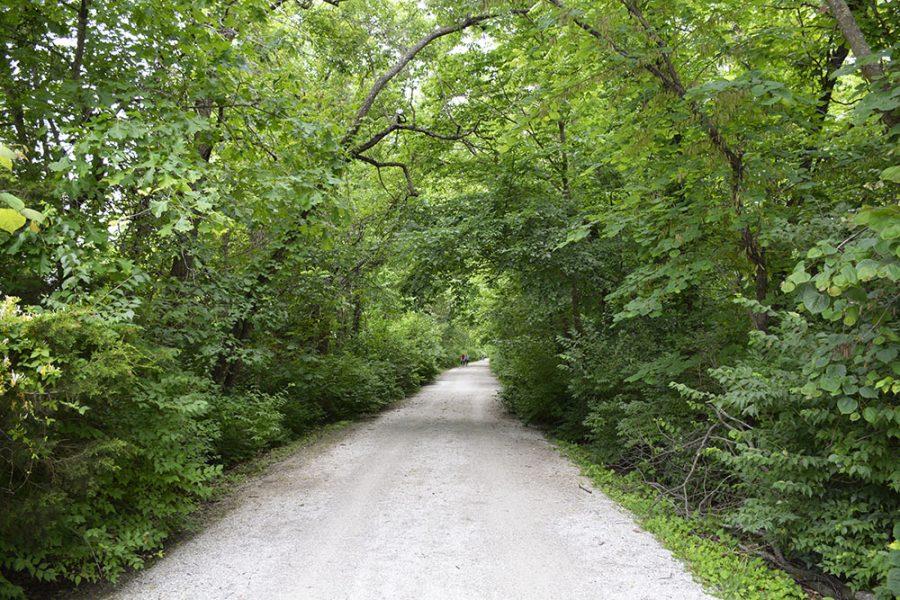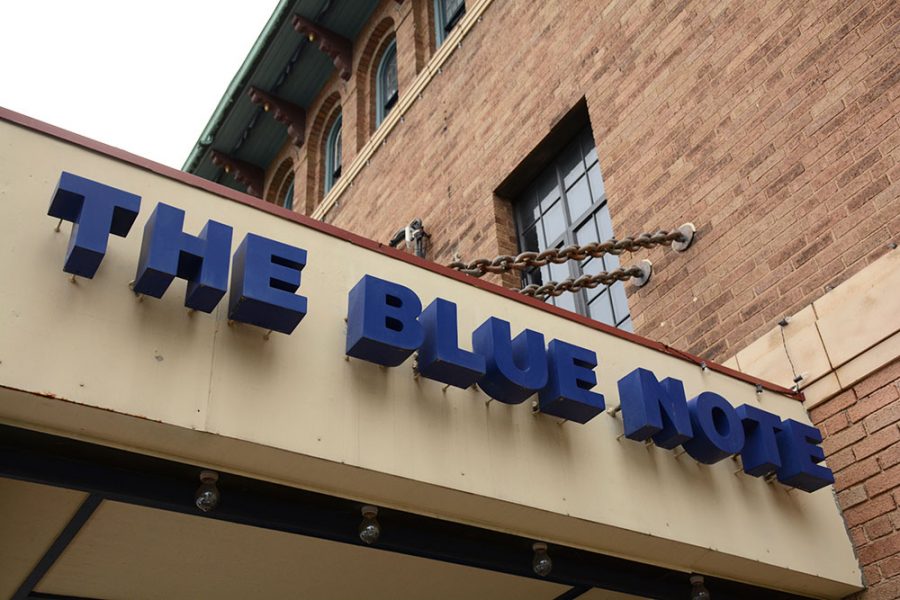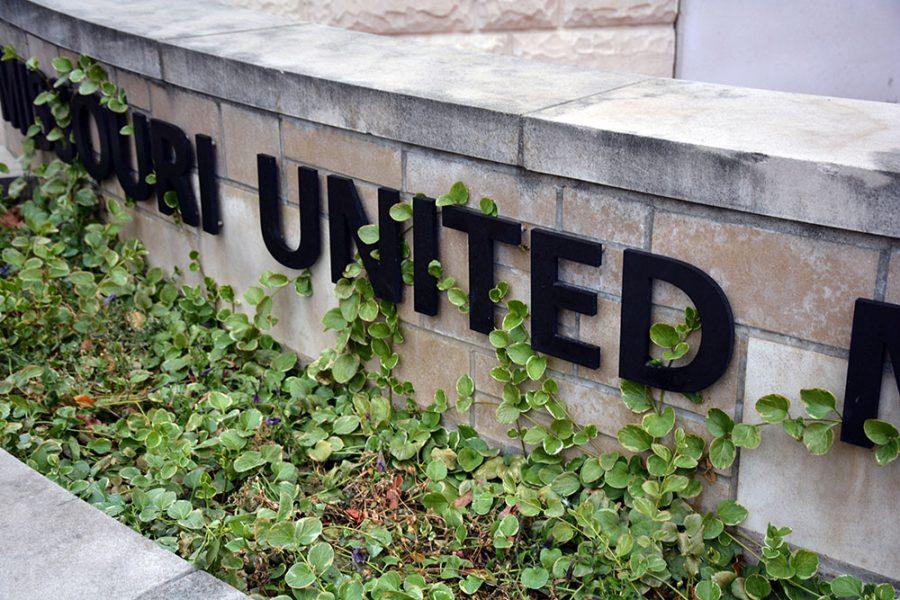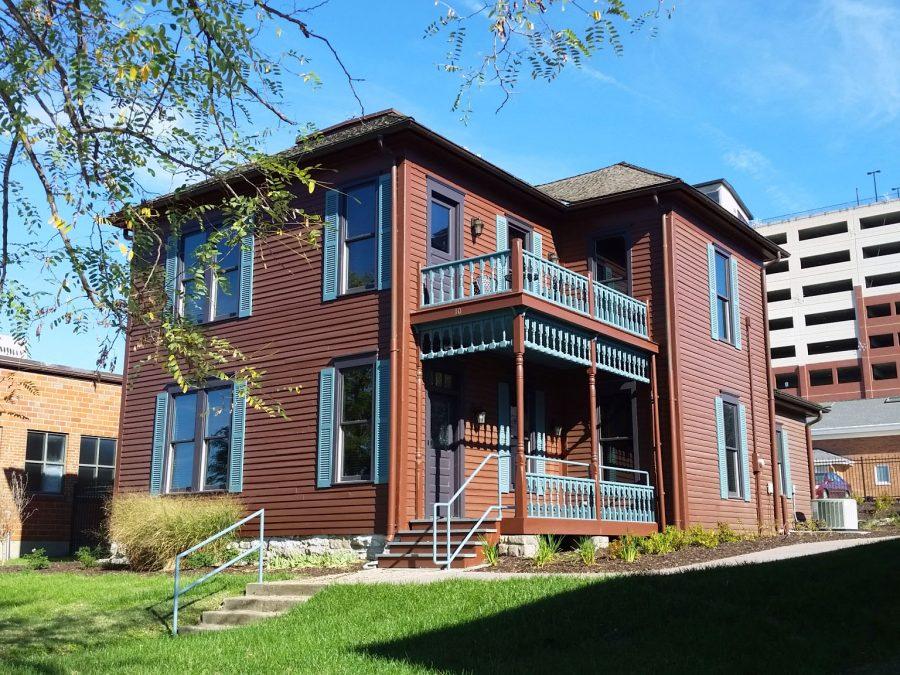The Missouri-Kansas Trail (MKT) is a recreational trail in Columbia, Missouri that runs nine miles long. A part of the former Missouri-Kansas-Texas Railroad, it was transformed into a recreational trail by the Rails-to-Trails movement, which began in the mid-1960s. This movement began in the Midwest and had a simple mission: to convert abandoned and unused rail corridors, which were closing at a prolific rate across America, into public trails.
In 1980, the U.S. Congress passed the Staggers Rail Act, which eliminated federal control over rail freight operations and allowed for the discontinuation of unprofitable routes. As a result, 4,000 to 8,000 miles of lines closed each year in the early 1980s. In 1983, Congress became concerned about the loss of thousands of miles of rail corridor and amended the National Trails Systems Act to create “railbanking,” a voluntary agreement between a railroad company and a trail agency to use an out-of-service rail corridor as a trail. These rail-trails would serve a radically different purpose, one that would be of the public’s health, economy and good for years to come.
In the early 1970s, the City of Columbia adopted a comprehensive greenway plan that would incorporate more green space and trails to the city. In 1978, Columbia Parks and Recreation applied for and received a $240,000 grant from the Railroad Revitalization and Regulatory Reform Act from the United States Department of Interior. The estimated cost to purchase and develop the land was $275,000; Columbia was one of 10 pilot projects in the United States.
The MKT Trail was developed in three phases: the first phase, which opened in 1982, was the 3.3 mile section from Stadium Boulevard to Scott’s Boulevard; the second phase, which opened in 1983, was the 1.01 mile section from Stadium to Stewart and Providence Road; the third phase, which opened in 1991, was the downtown section of the trail, ranging from Providence Road to the intersection of Fourth and Cherry Streets.
To this day, the trail is enjoyed by thousands of citizens with park amenities like fitness stations, restrooms, drinking fountains, commemorated benches and the Martin Luther King, Jr. Memorial at Battle Garden. According to a 2015 citywide citizen survey, 82 percent of Columbia households said that they used the MKT trail system.
The love of trails extends outside of Columbia’s borders. Prior in 2013, Missouri was named the “Best Trails State” by American Trails, a national, nonprofit organization that works to enhance nature trails in America.
On any given day, rain or shine, the MKT trail can be found bustling with people of all ages socializing, exercising and exploring the trail. Luscious, green trees and foliage burgeon on either side of the trail. Sunlight peeks through the thick canopy and reflects onto the 10-feet wide surface of crushed limestone. By learning the story of how an integral piece of Columbia came to be about, people will hopefully realize and appreciate the city and governmental efforts that went into transforming a railroad to an abounding, recreational trail.
Feature photo by Joy Park
LATEST NEWS
- Bruins Baseball ranks second in the state, April 20
- Stress, anxiety skyrocket as students prepare for upcoming AP tests
- RBHS holds successful night of percussion
- Not even water?
- Solar eclipse to pass through Missouri, April 8
- How CPS is organized: a guide
- City of Columbia to hold school board election April 2
- Youth Election Participants to assist in upcoming municipal election
- City of Columbia hosts first Community Engagement Session for McKinney Building, hopes to gain public insight on the structure’s future
- RBHS Track Team Opener at Battle Gallery
MKT Trail
April 3, 2017
Leave a Comment
More to Discover
@2021 - www.bearingnews.org
































































































